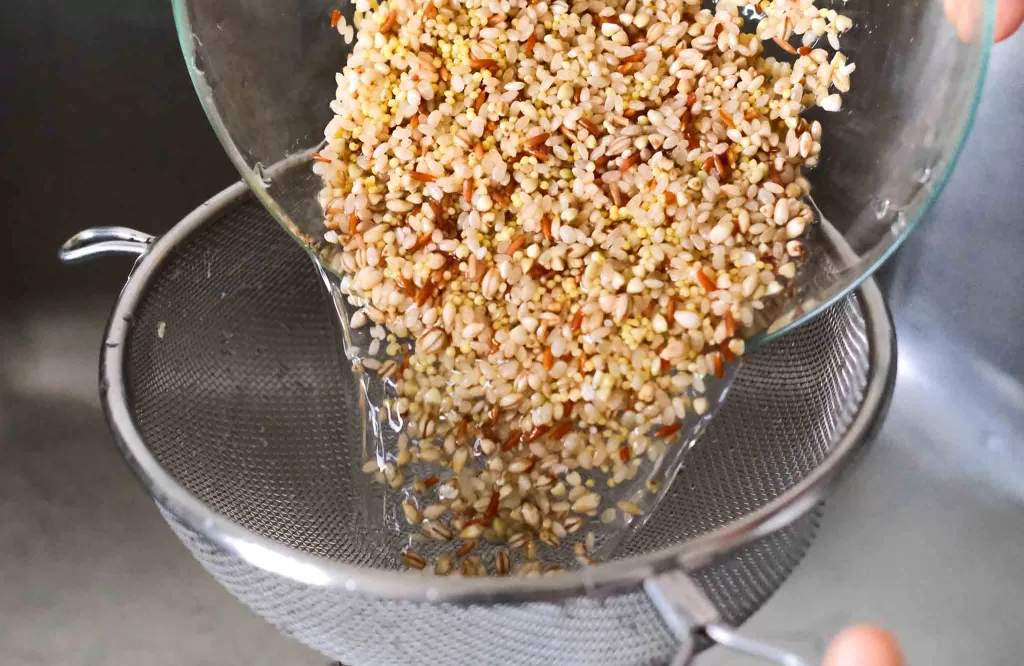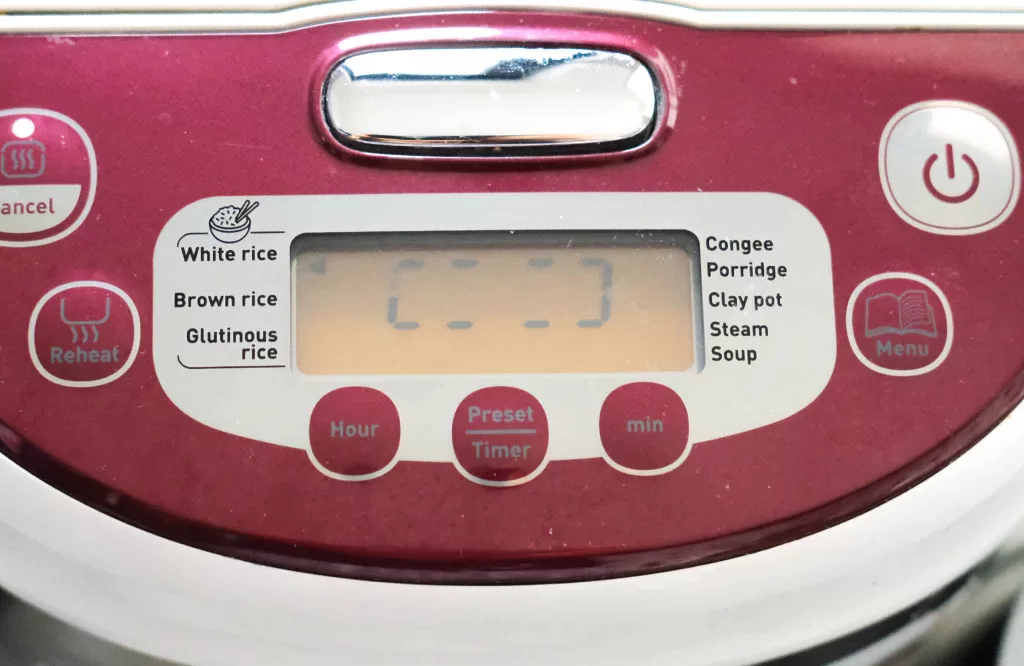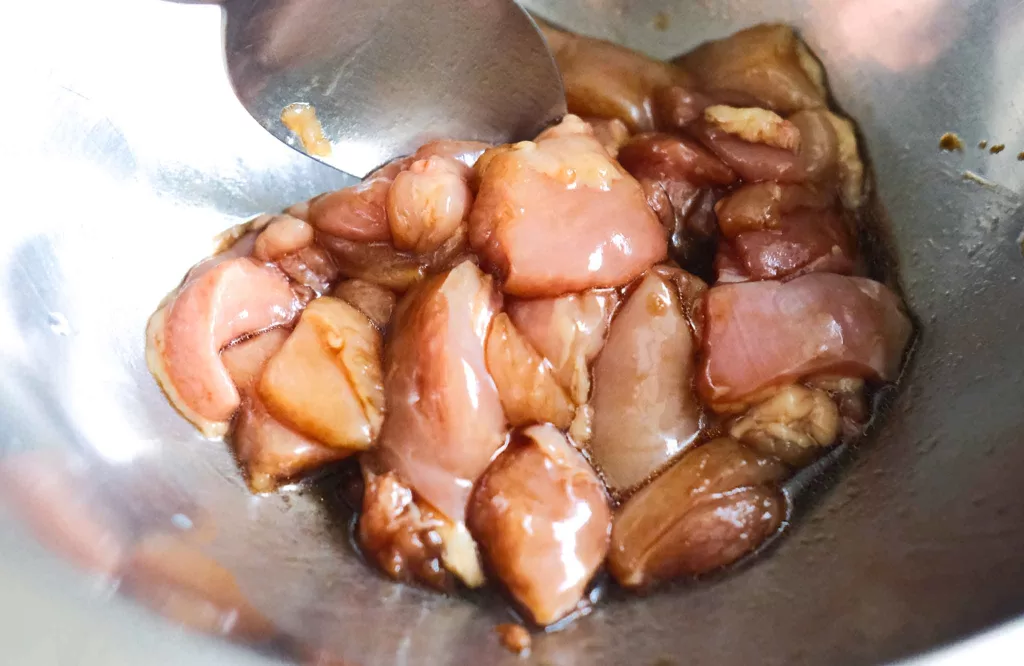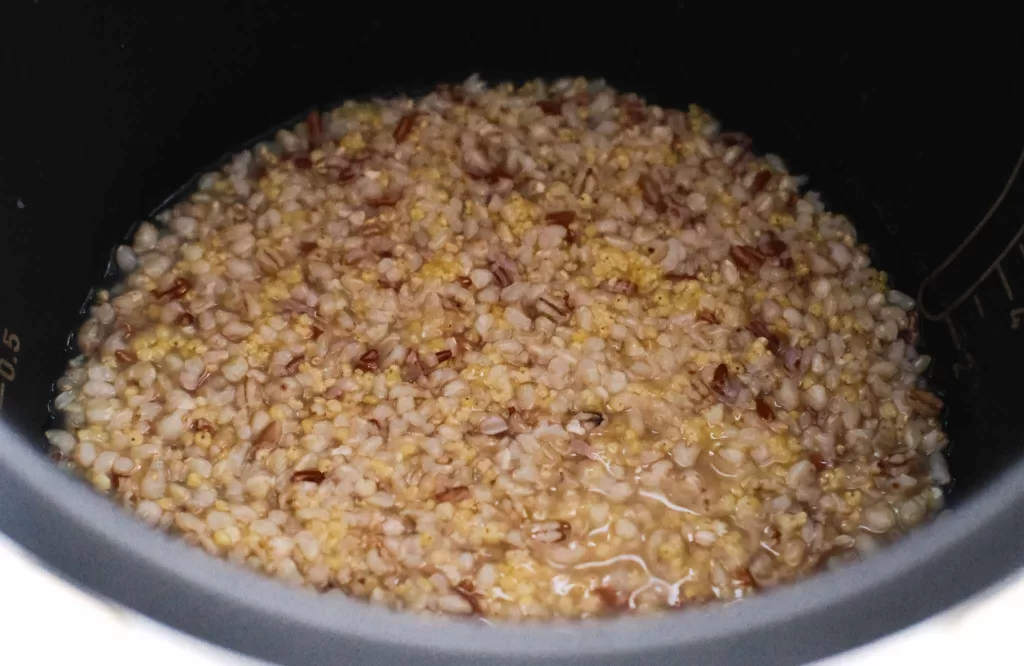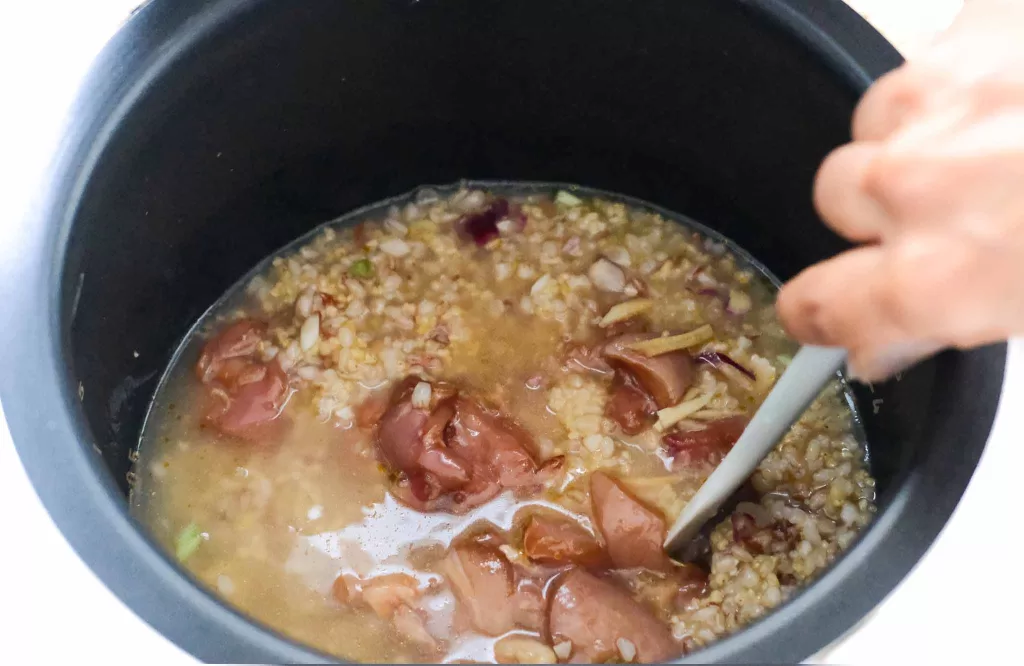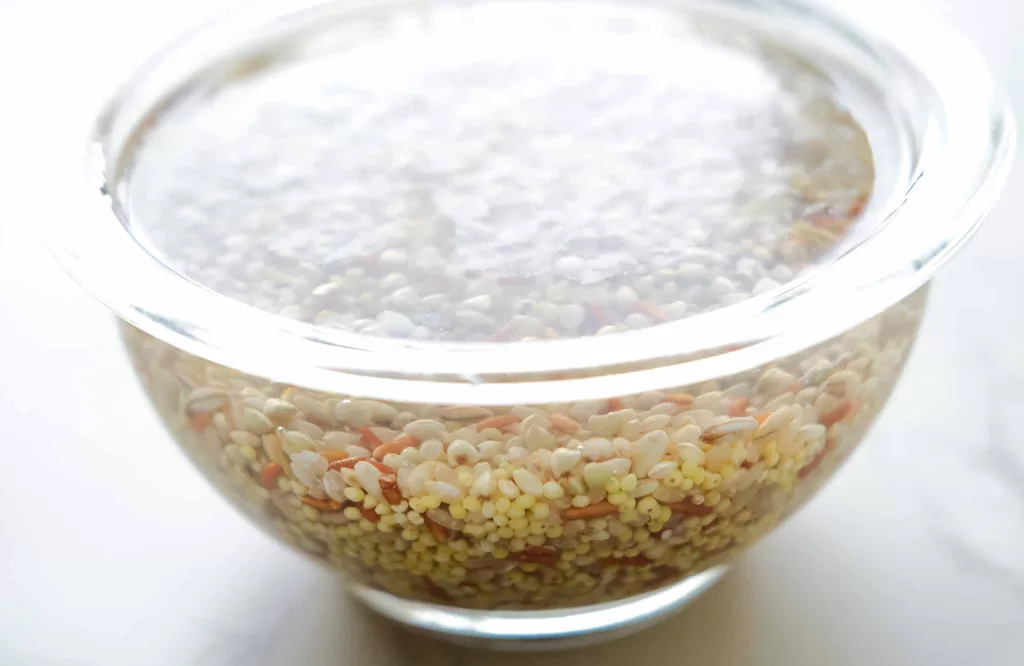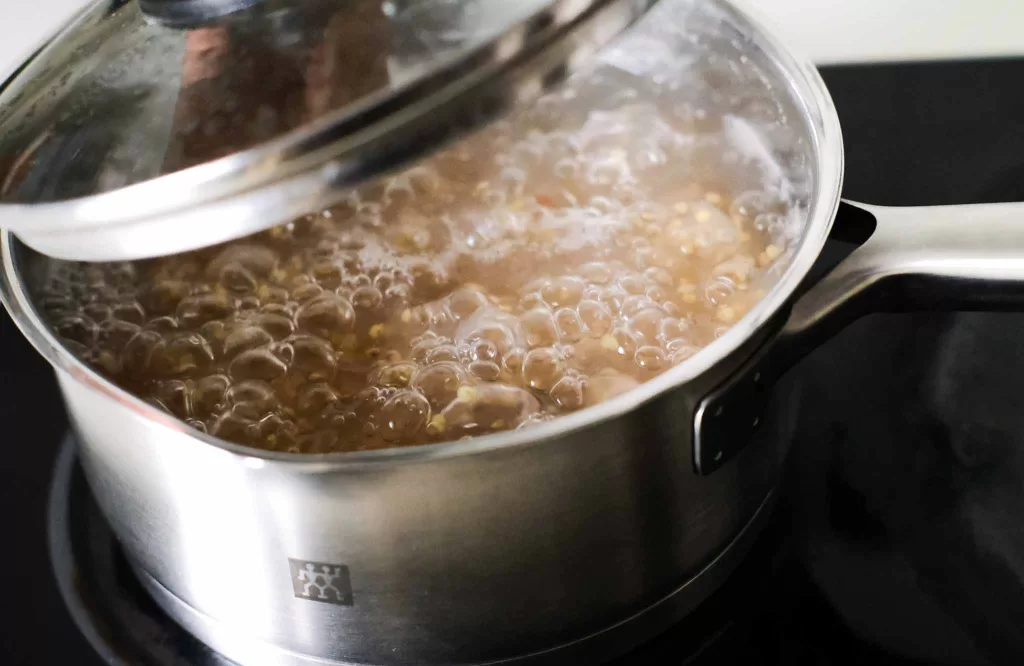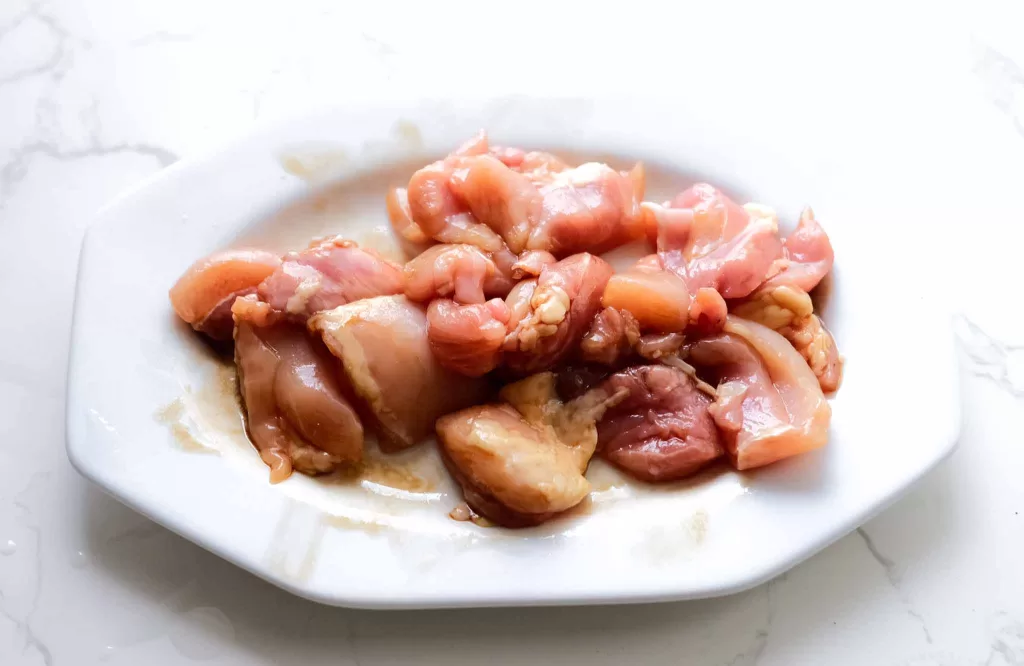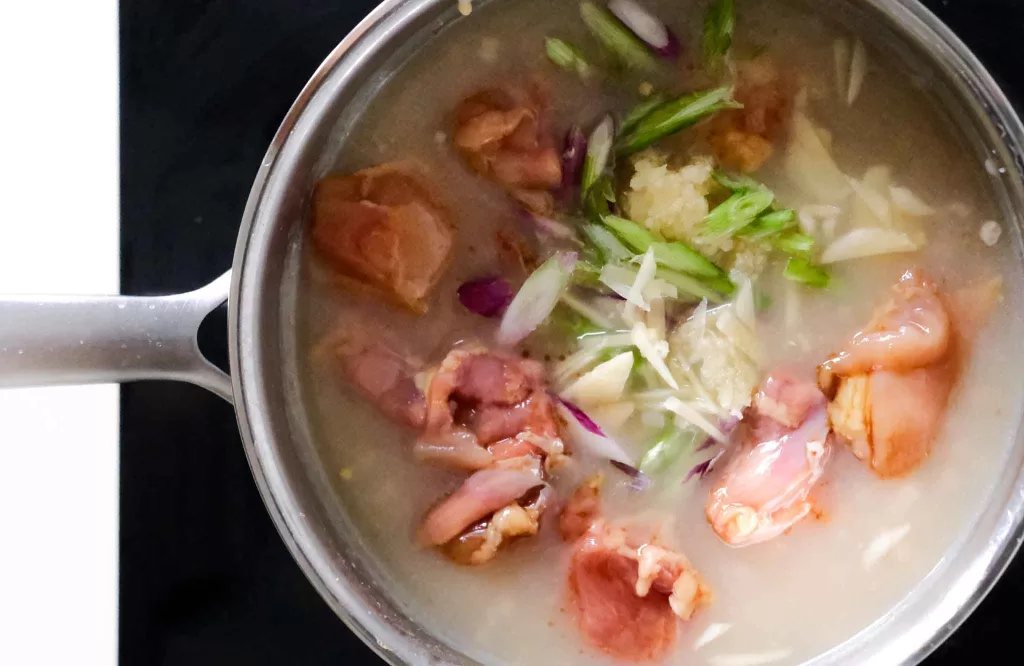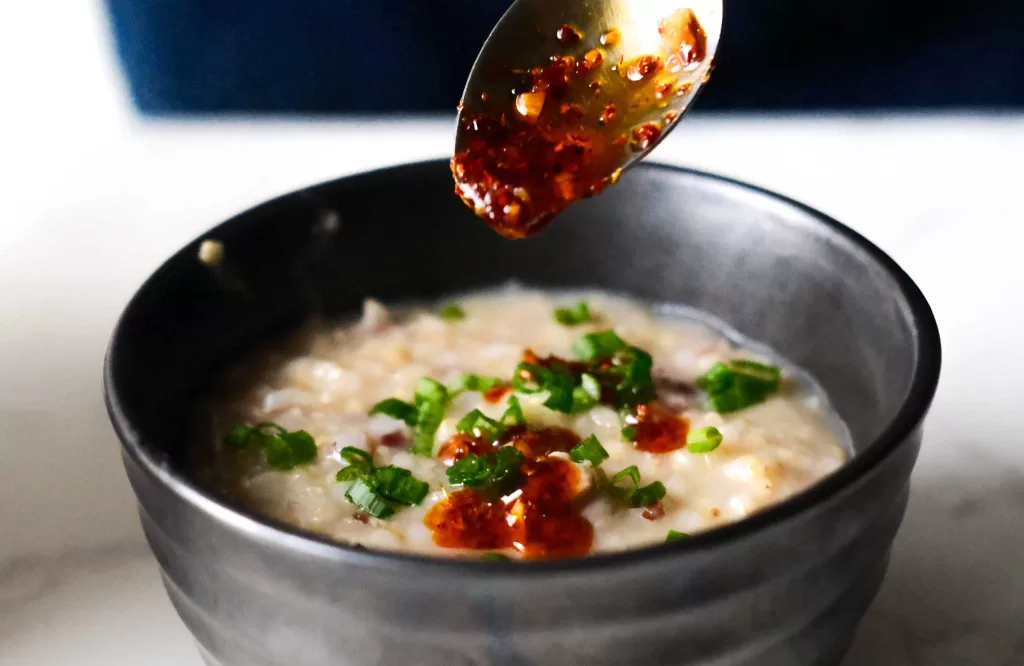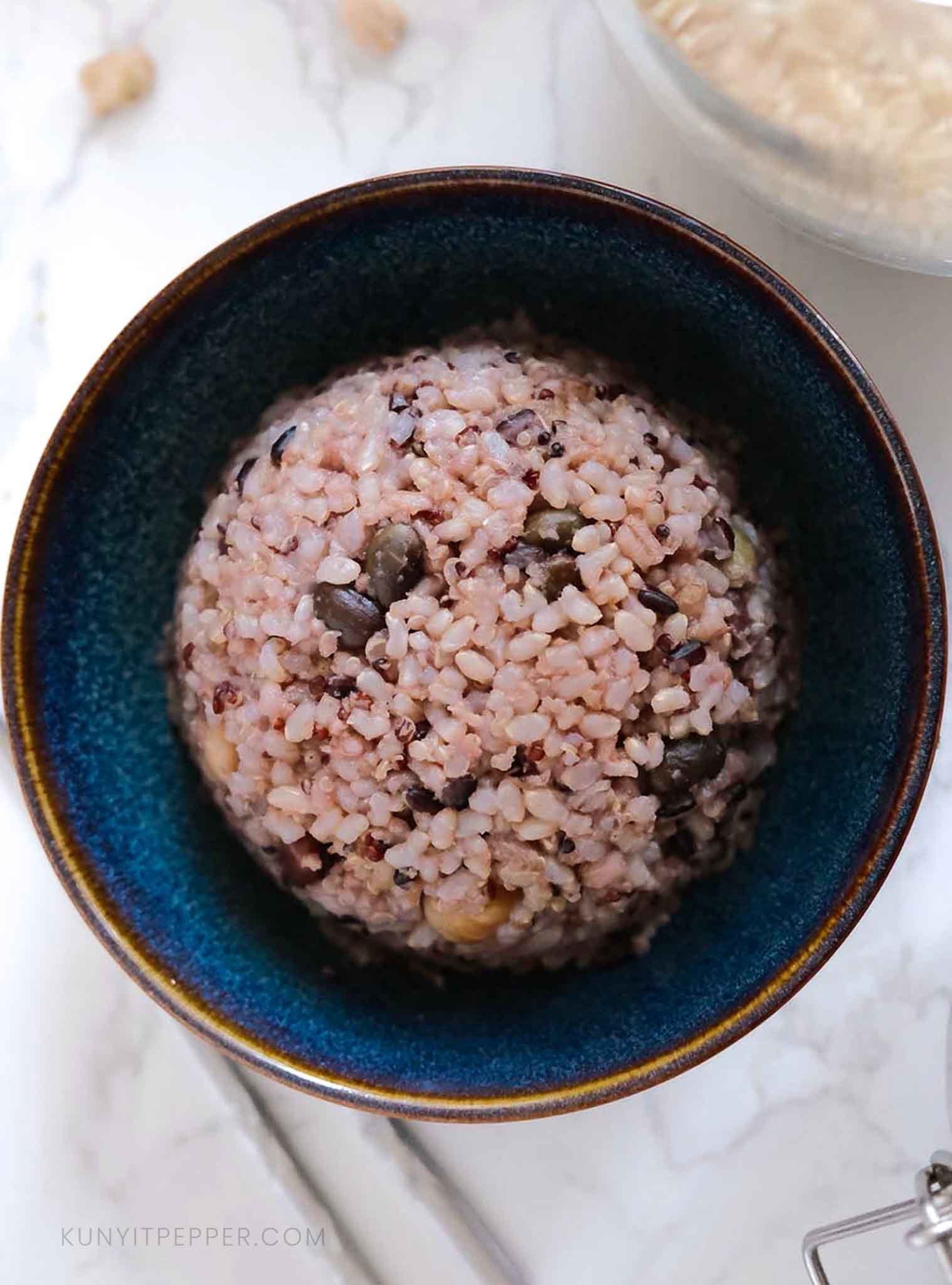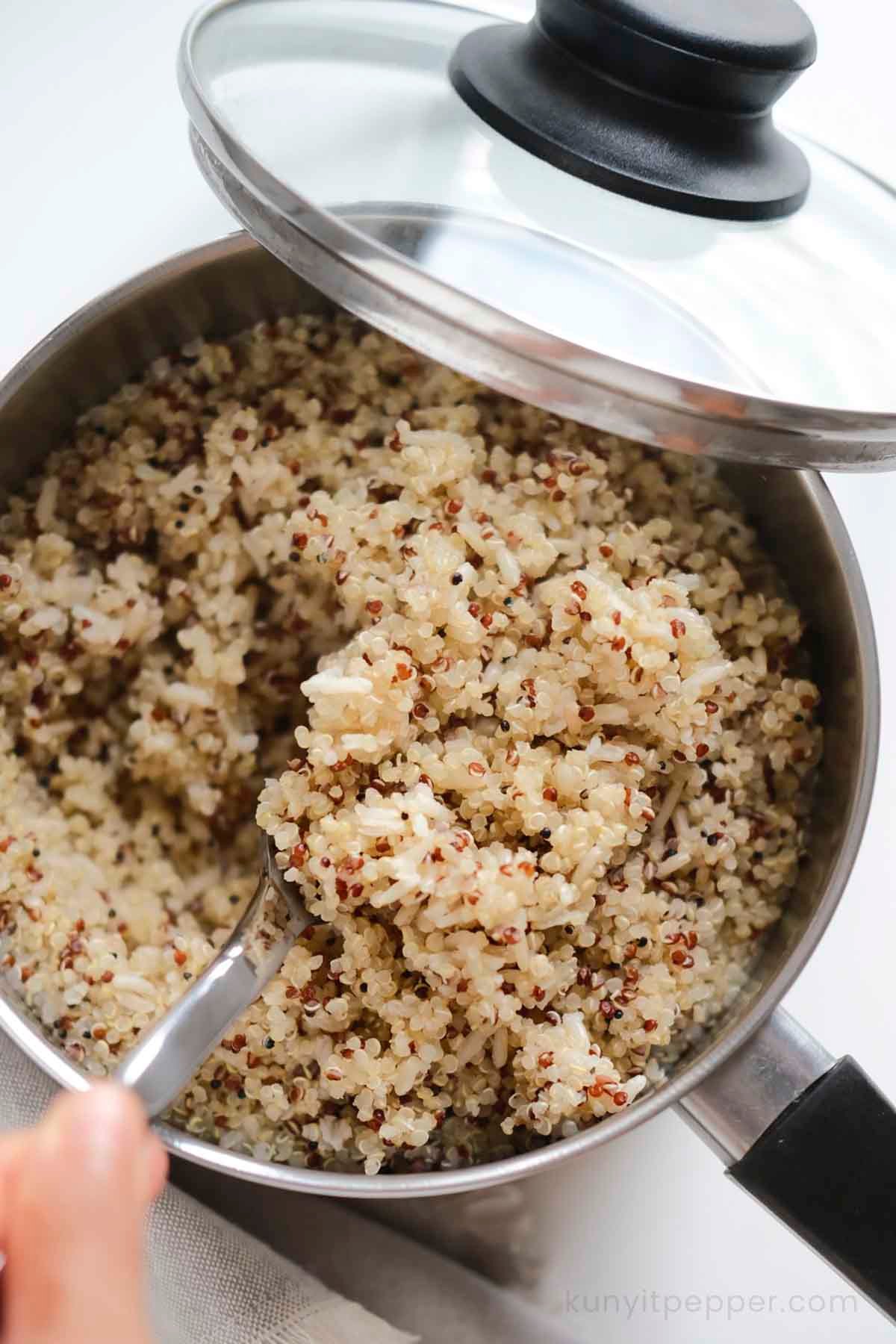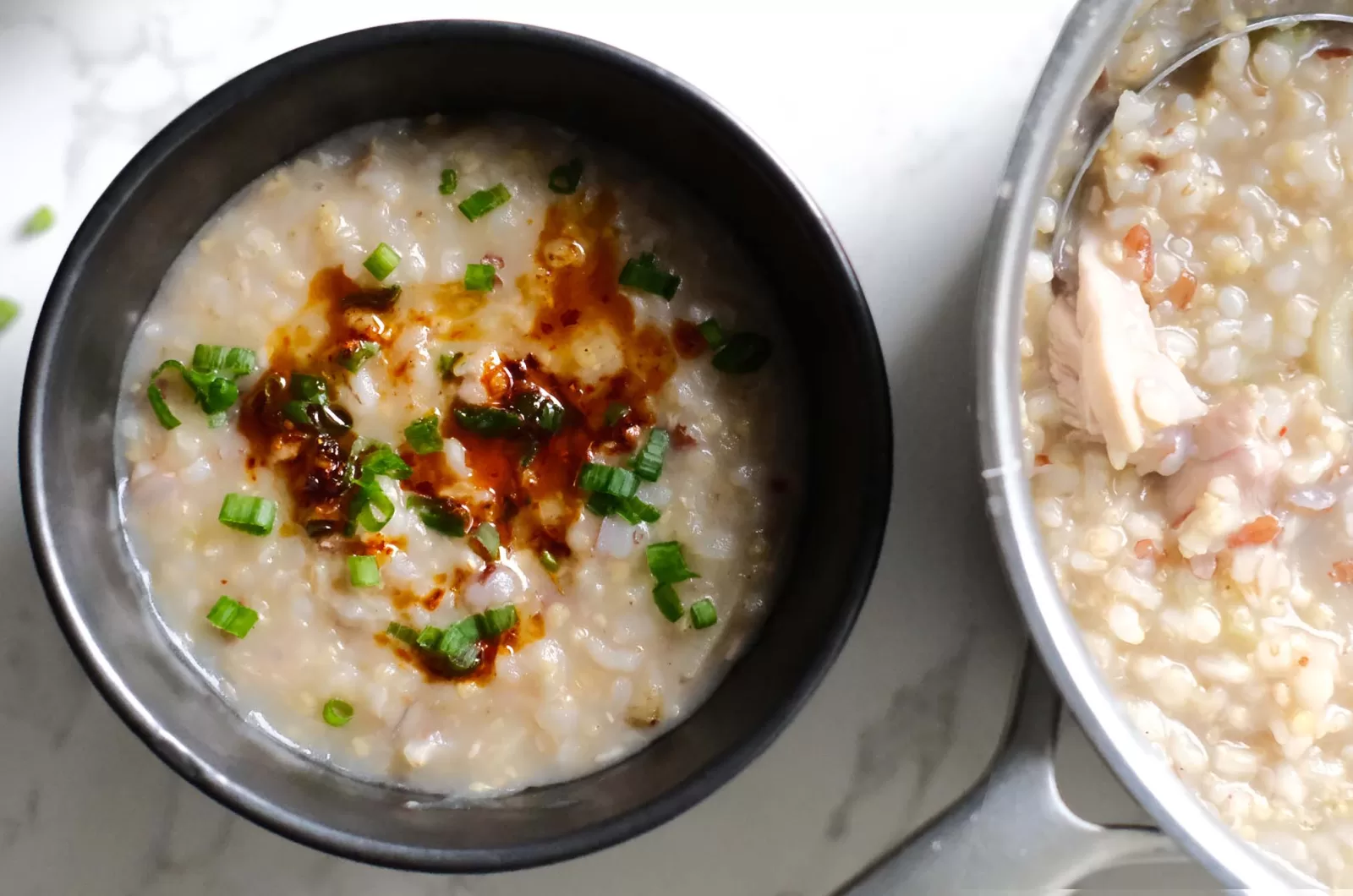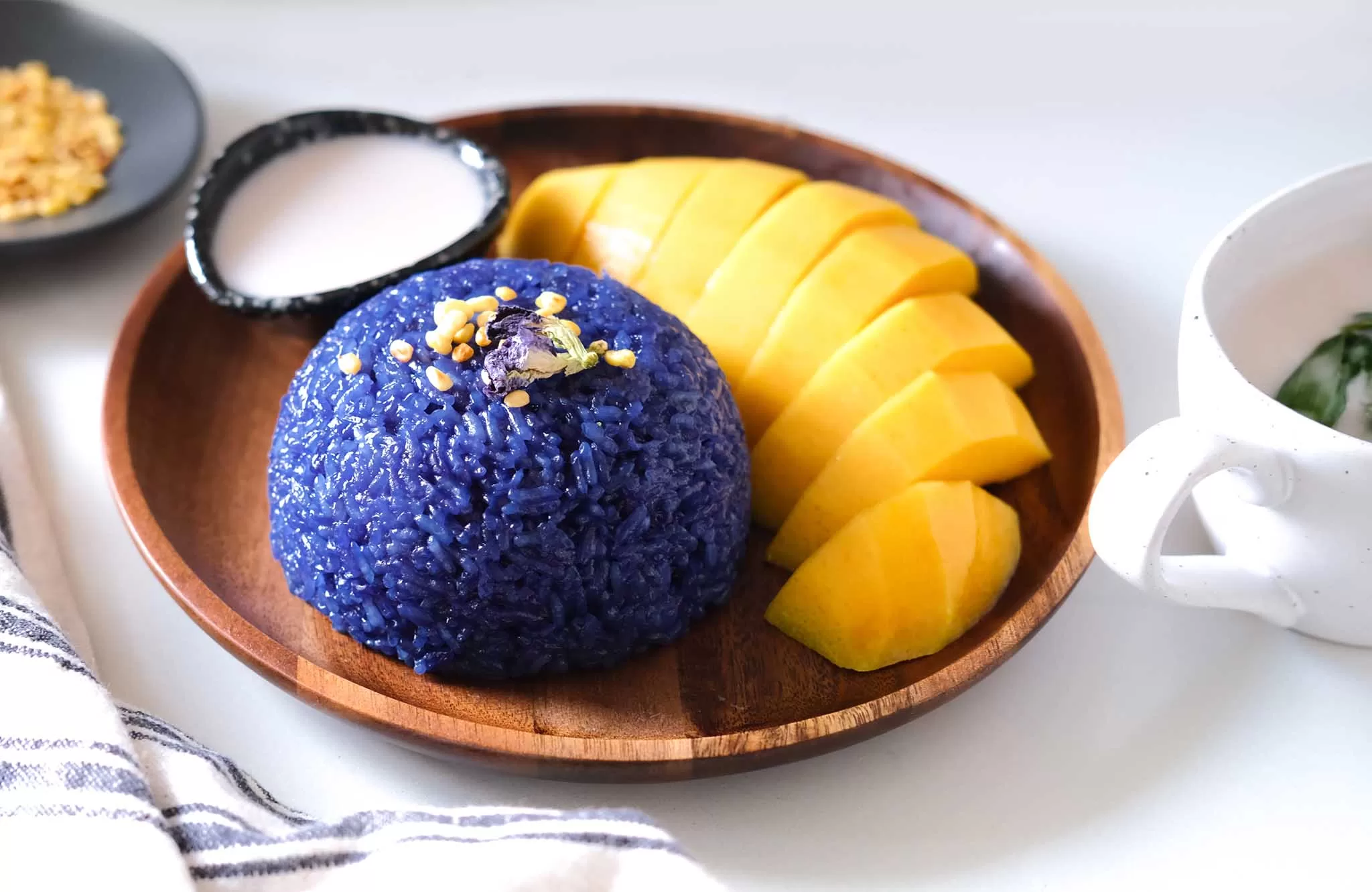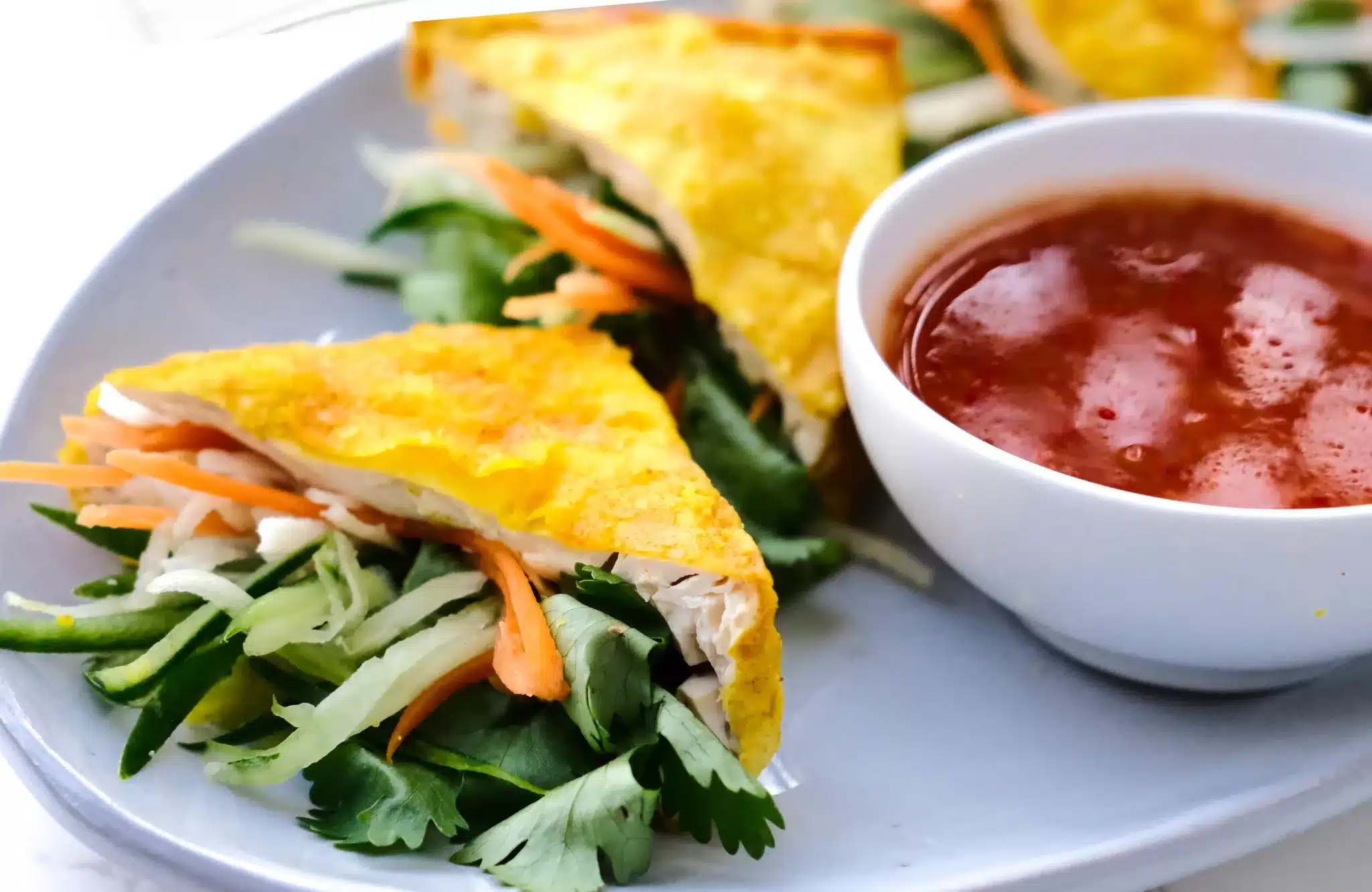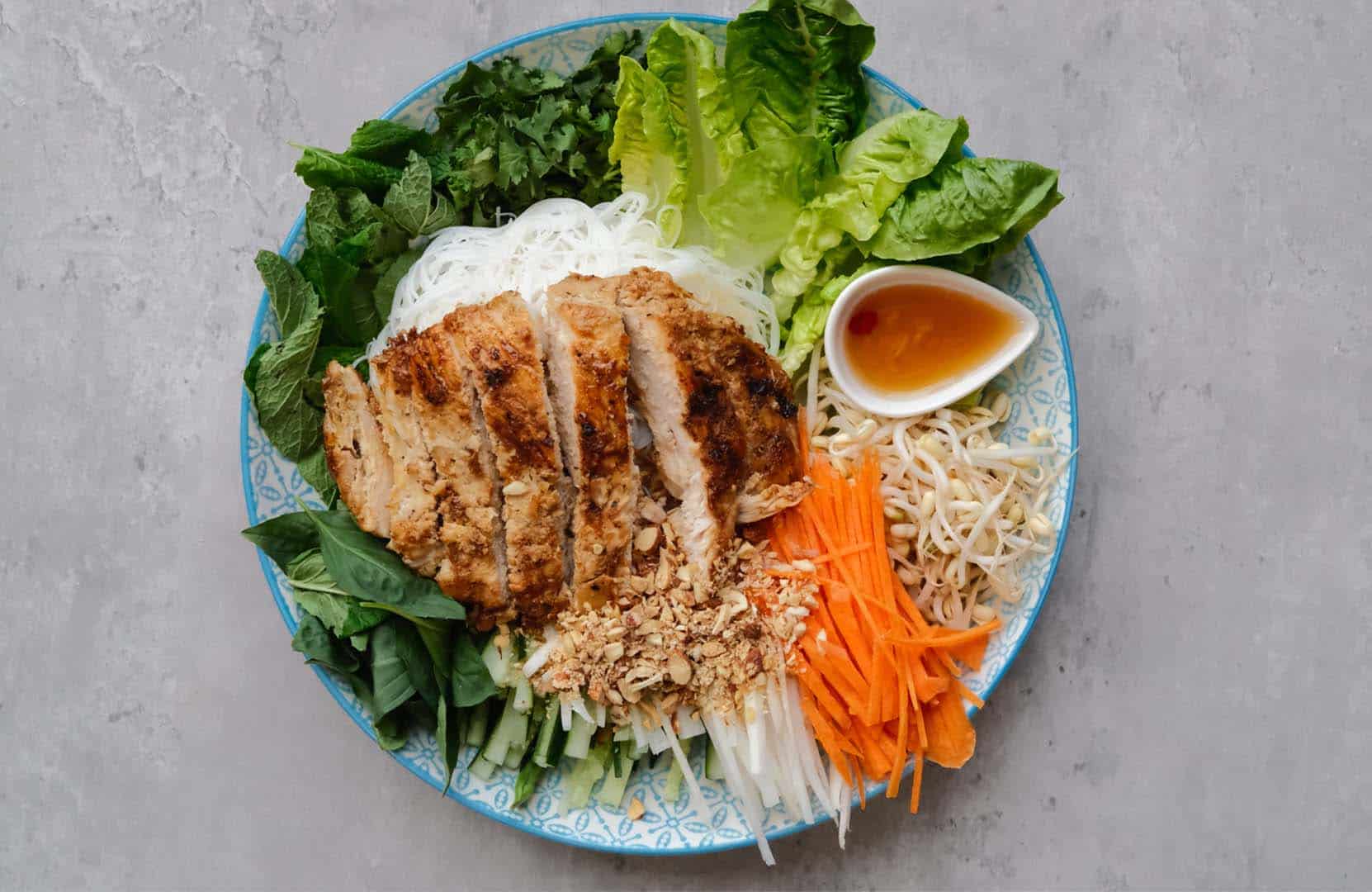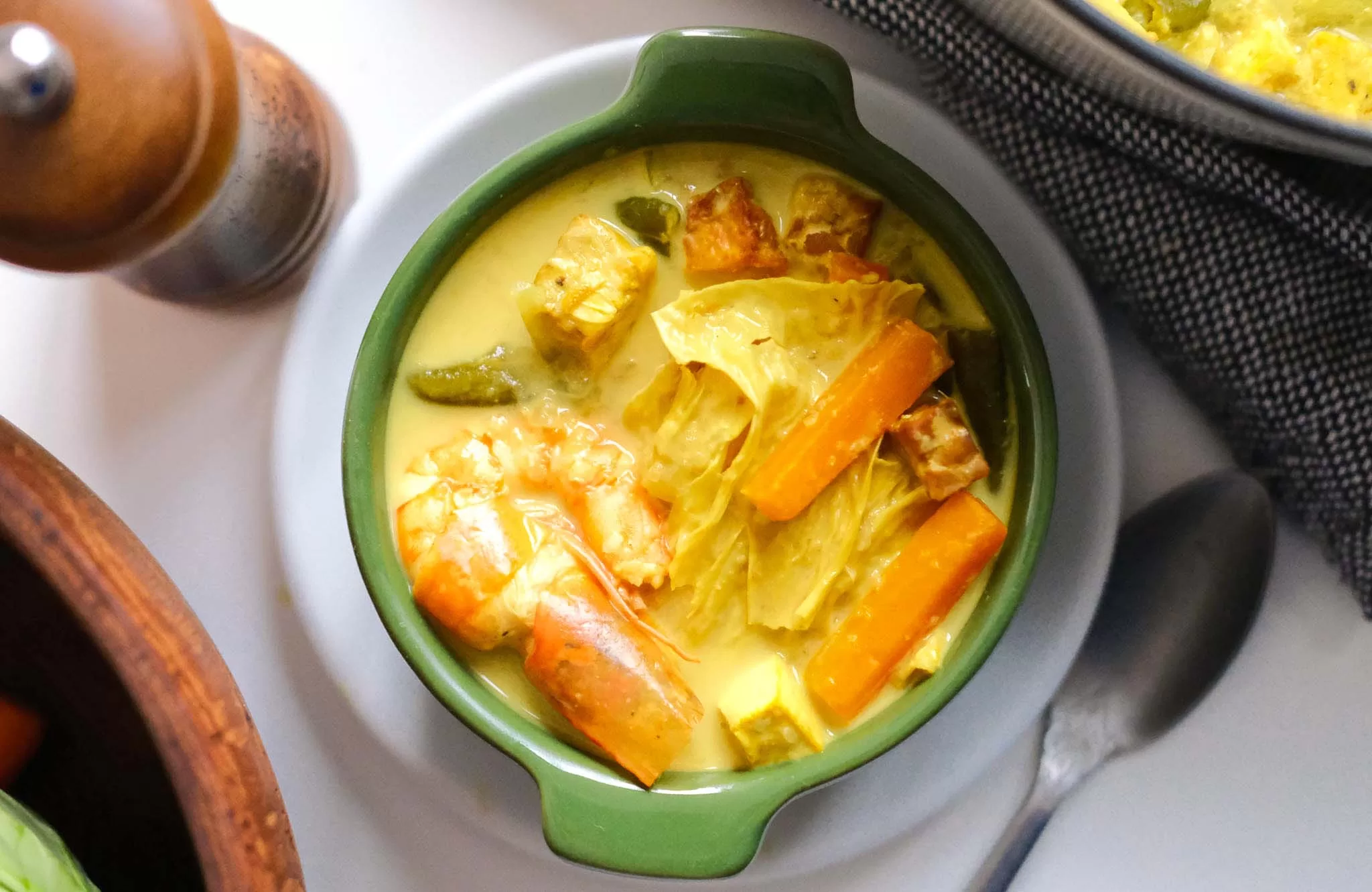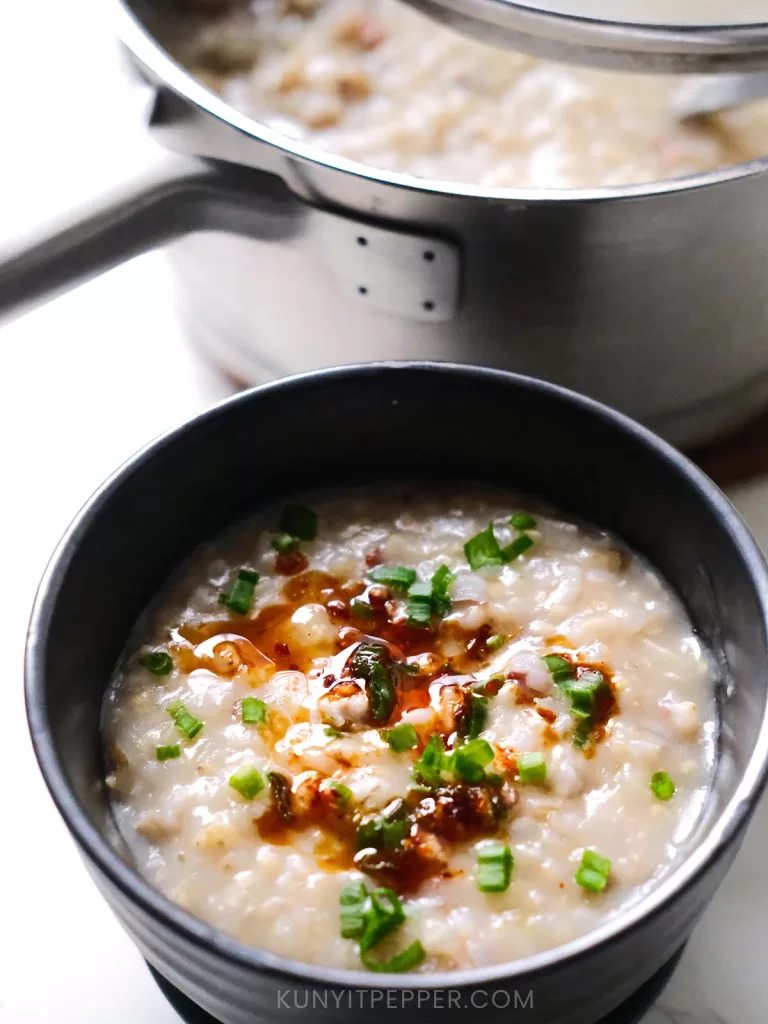
Just like chicken soup with whole grains, this multigrain ginger chicken congee is my go-to savory porridge recipe I make when my body needs recovery and a moment to slow down.
Made with whole grains instead of white rice and simmered in chicken broth infused with ginger, garlic, and scallions, this congee has the comforting flavor of an Asian chicken soup I could never get enough of, while also being rich in fiber and antioxidants. I truly believe it helps to get me back on my feet.
If you’re craving a soupy yet filling Asian comfort food or a healing rice porridge that isn’t bland, I hope this recipe brings you the satisfaction and nourishment you need, as it does to me in times of need.
Table of Contents
- Multigrain ginger chicken congee – Anti-inflammatory chicken porridge
- Why this multigrain ginger chicken congee is good for your body
- Ingredients to make ginger chicken congee with multigrain brown rice
- How to Make Multigrain Ginger Chicken Congee in a Rice Cooker
- How to Make Multigrain Ginger Chicken Congee on the Stovetop
- Other recipes to pair with this Multigrain Ginger Chicken Congee
- Storage Tips
- Reheating congee
- FAQ
- Related Recipe
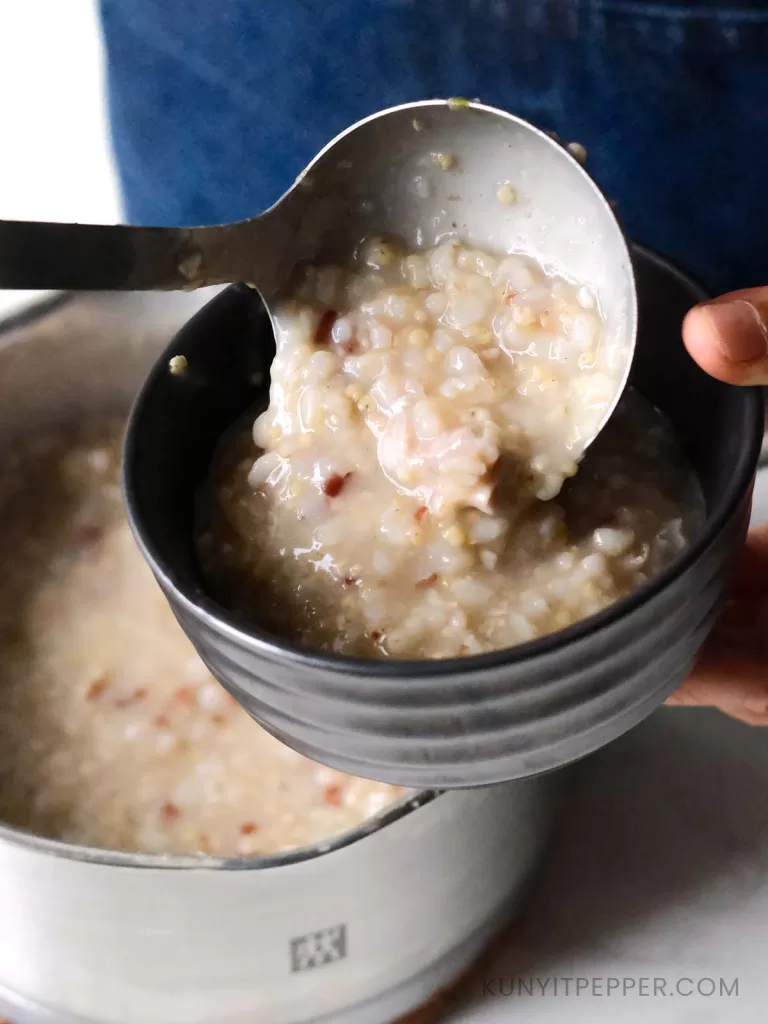
Multigrain ginger chicken congee – Anti-inflammatory chicken porridge
Initially, I made this post for my husband to follow whenever I get sick. I have a compromised immune system and tend to get sick easily. Plus, with psoriasis, I have to take anti-inflammatory rich food and a diet rich in antioxidants as much as I can.
So I made sure this healing porridge guide is easy to follow, especially for someone like him, a visual learner and not much of a cook.
Whether you plan to make this brown chicken congee in a rice cooker or on the stovetop, you’ll find easy, step-by-step instructions with photos for each step below. It’s a comforting, warming, and satisfying choice when you don’t feel your best.
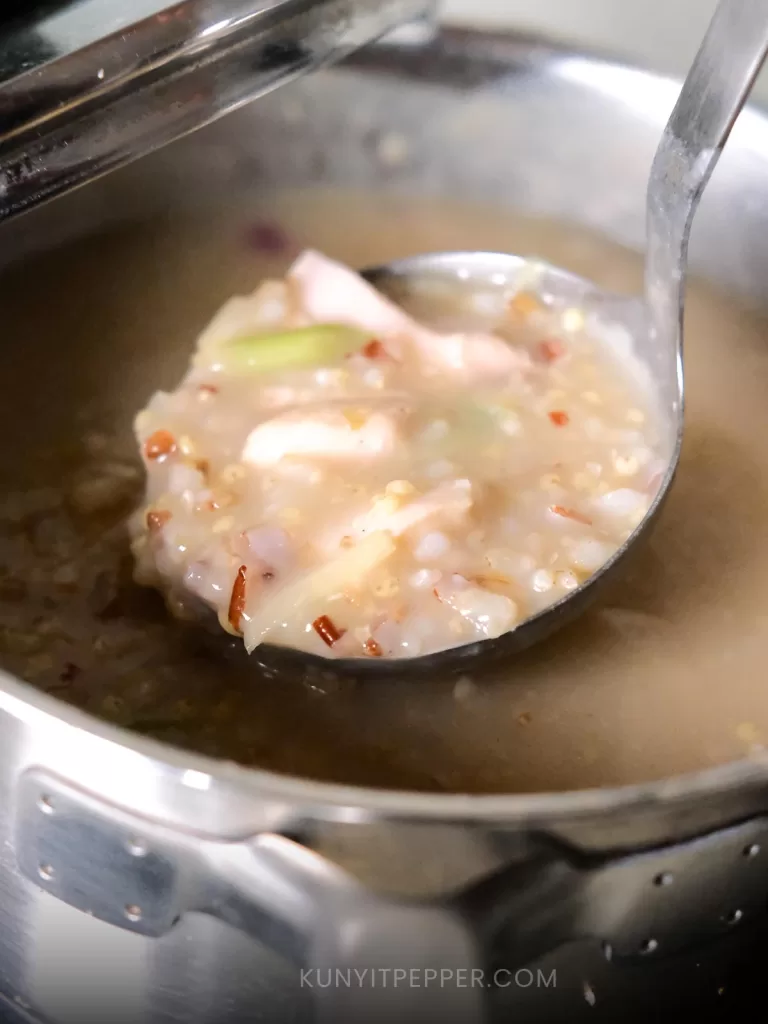
Why this multigrain ginger chicken congee is good for your body
- Made with 5 different types of whole grains, this congee is rich in fiber and antioxidants.
- Unlike traditional congee made with white rice, which digests quickly and can cause a blood sugar spike, this multigrain version is a complex carbohydrate that digests more slowly.
- Packed with anti-inflammatory superfoods, including ginger, garlic, sesame oil, and chicken broth, this healthy rice porridge not only adds aromatic flavor but also brings anti-inflammatory and healing benefits.
- That makes it a healthier alternative to traditional congee while still keeping the comforting flavor of Chinese jook or classic ginger chicken congee.
Recipe Summary & Highlight: Enjoy the slow-digesting benefits of whole grains (alternative to white rice), cooked with aromatic, anti-inflammatory ingredients rich in healing properties, without missing out on the familiar, soothing flavor of classic ginger chicken congee.
Ingredients to make ginger chicken congee with multigrain brown rice
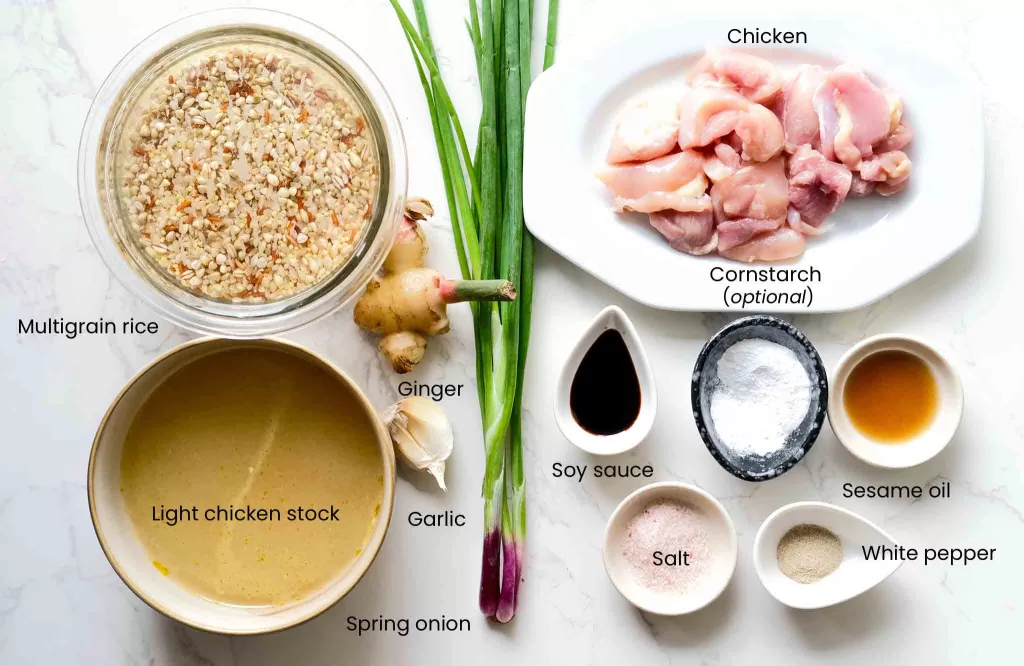
Based
- Multigrain rice (wholegrains) – I use a store-bought version that combines 5 different types of whole grains which include brown rice, wild red rice, millet, buckwheat and barley. To make the recipe, scroll down to the recipe card.
- Light chicken broth – Opt for low-sodium, all-natural light chicken broth to better control the salt and retain its nutritional value.
- Ginger – Use fresh ginger for the best aroma and its healing benefits. I sliced the ginger thinly so the flavor is not too harsh when you bite into it. Do not opt for powder, but it’s fine to swap for paste.
- Garlic – Grate the garlic so it gives a nicely spread garlic aroma. Feel free to use the paste.
- Spring onion – Chop them thin and separate the white and green parts. The white is for cooking, and the green is for garnishing.
- White pepper – This is essential for making an authentic Chinese congee. So, if you’re considering swapping it for black pepper, it won’t give you the same flavor.
- Salt
Chicken and marination
- Chicken – Chicken thighs give a soft bite, with extra collagen and additional fat that adds flavor to this ginger chicken congee. However, since we are using chicken stock that covers all those, you may as well opt for chicken breast for a lean protein option.
- Pure sesame oil – This makes an authentic Chinese congee flavor. Pure sesame oil is shown to have anti-inflammatory benefits.
- Cornstarch (optional) – Cornstarch helps enhance both flavor and moisture absorption, which makes the chicken flavorful and moist. You’ll need just a touch, as too much will make the congee thicker than it should.
- Light soy sauce – I use low-sodium soy sauce so I can control the salt better. My options are Lee Kum Kee light soy sauce (less salty) and Kikkoman soy sauce, less sodium.
Substitute: Tamari. Kikkoman tamari is great for this recipe, especially if you can’t tolerate gluten in traditional soy sauce.
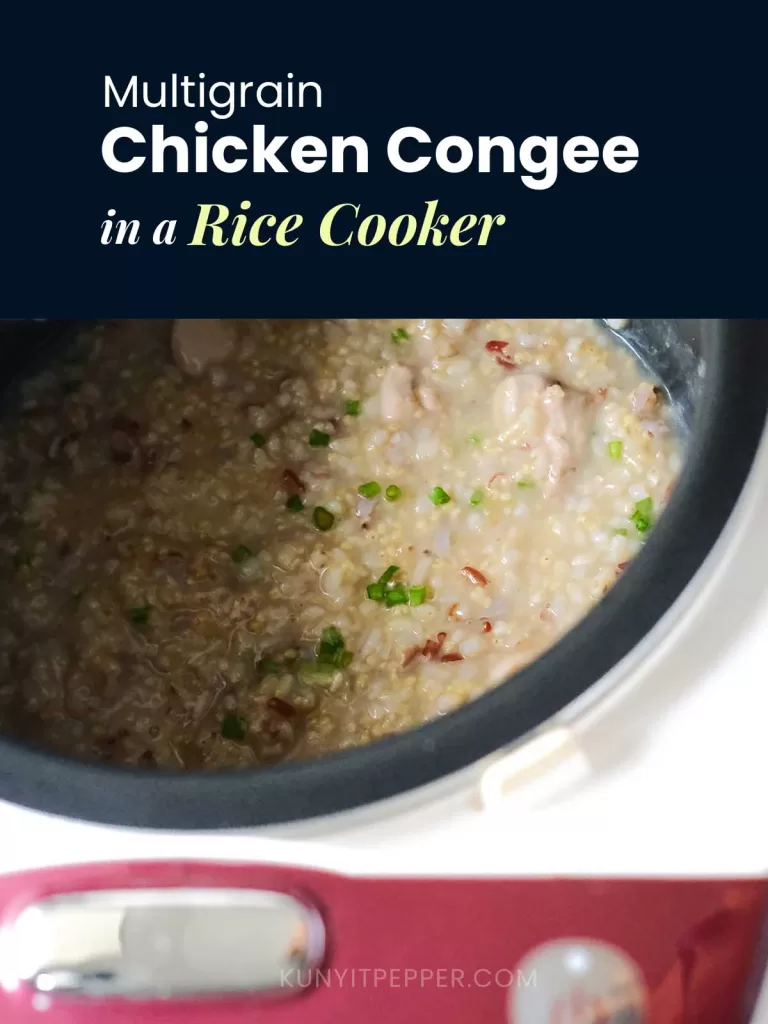
How to Make Multigrain Ginger Chicken Congee in a Rice Cooker
Cooking multigrain ginger chicken congee in a rice cooker is super easy. I like the set-it-and-leave method. There’s no need to worry if the water dries or the starch sticks to the bottom of the pot. The only downside is that you’ll need to plan ahead (approximately 3 hours) as it’ll take quite some time. It’s more of a slow cooking, but not an active cooking.
- Wash and soak the multigrain rice for 2h.

- Cook the rice congee until soft (1h). Once soaked, drain the rice and add it to the rice cooker pot along with clean water. If you have a rice cooker with a porridge setting, set it on to cook. This usually takes 1 hour on my rice cooker. If the normal white rice setting is all you have, you can use it, but consider cooking it for 2 times since multigrain rice takes longer to cook. So the times vary depending on your rice cooker setting and soaking time.

- Meanwhile, prepare the chicken for marination. Once you set the rice cooker to cook, slice the chicken into bite-sized and mix the marination ingredients in a bowl. Rub them to coat the seasoning, and leave them to marinate. I keep it in the fridge to retain its freshness.

- Add the remaining ingredients and continue cooking. Once the timer is done, or your rice has softened, add all the ingredients into the pot, stir to mix, and leave to cook for another set of time on the same setting (porridge or normal setting).


- Garnish and serve. Garnish with green spring onion and chili oil, and enjoy it warm!
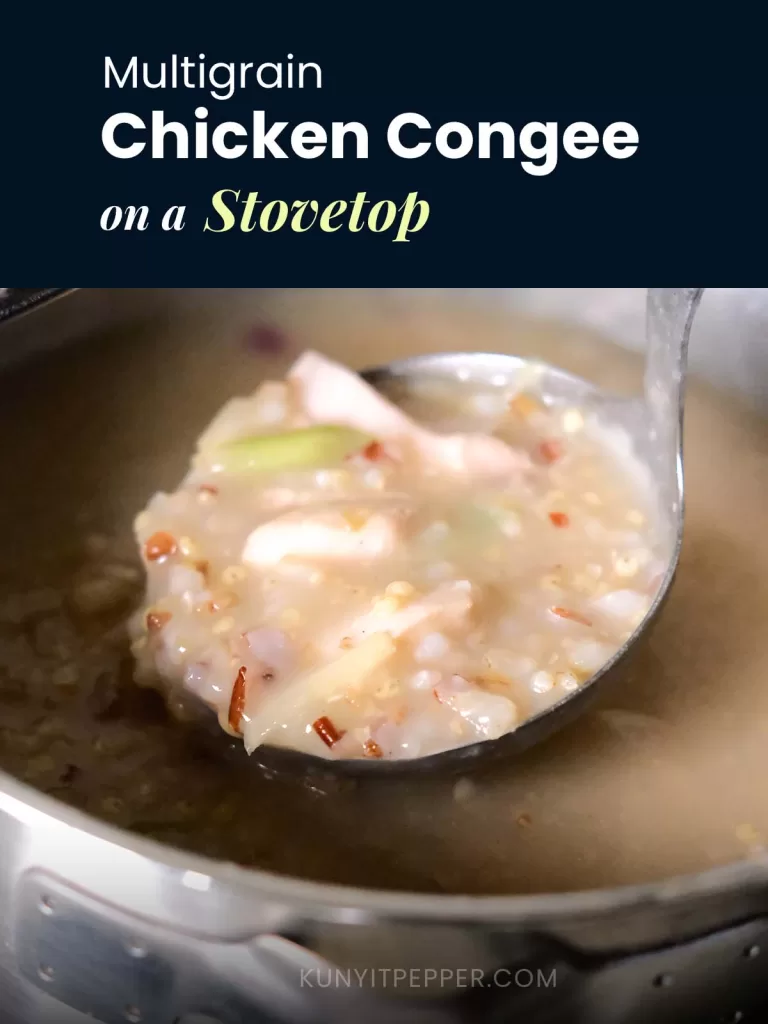
How to Make Multigrain Ginger Chicken Congee on the Stovetop
Making congee on the stovetop is as simple and can take less time compared to a rice cooker since you can control the heat. But it does require occasional stirring. It’s not exactly active cooking, but you’ll still need to check on it to prevent burning, sticking, or boiling over.
Important tips: Use a non-stick pot to help prevent burning. A medium-sized pot also gives more room for the congee to bubble and foam, which helps avoid spilling over.
- Wash and soak the multigrain rice.

- Simmer the rice congee until soft (30–35 minutes).
Drain the soaked grains and transfer them to a pot with clean water. Bring to a boil over high heat, then reduce the heat to medium-low.
Cover with a lid and let it simmer for 30 to 35 minutes. Check halfway through to make sure it’s not drying out or sticking to the bottom (add 1/2 to 1 cup of water if needed).
- Meanwhile, prepare the chicken for marination.
While the grains are cooking, mix the sesame oil, soy sauce, cornstarch, and chicken in a dish or bowl. Rub the chicken to coat, then leave it to allow the seasoning to absorb. I’d keep it in the refrigerator.
- Add the remaining ingredients and continue to simmer.
Once the multigrain rice has softened, add the marinated chicken, chicken stock, and remaining ingredients to the pot. If the porridge seems dry, consider adding 1/2 cup of water.
Cover with a lid and let it simmer for 30-40 minutes, or until softened.
- Garnish and serve.
When the porridge has completely softened, turn off the heat and remove the pot from the stove. Garnish with chopped green onions and drizzle with chili oil, and enjoy it warm.
Other recipes to pair with this Multigrain Ginger Chicken Congee
- Chili oil
- Garlic oil
- Ginger scallion
Storage Tips
When it reaches room temperature, transfer the congee into an airtight container and store it in the refrigerator.
Consume within 3 days. The congee will thicken at a cold temperature, which is fine. Consider adding a little water to thin it out when reheating.
Reheating congee
Reheat ginger chicken congee in a microwave (no pot to wash)
- Bring out the congee from the refrigerator.
- Scoop the congee into a microwave-safe bowl.
- I would stir in a little water (about 3 tbsp for 1 bowl) to make it thinner, and then reheat it for about 2 minutes or until warm enough.
Reheat ginger chicken congee on a stovetop
- Scoop the refrigerated congee into a small pot.
- Add a little water to temper the starch.
- Heat them at a medium to low temperature, stirring occasionally to prevent burning or sticking. If you have a non-stick pan, that would be best.
- Turn off the heat once it simmers or is hot enough.
FAQ
What is the ratio to make multigrain rice congee?
The ideal rice-to-water ratio depends on your cooking method and the combination of grains used. For this recipe,
- Stovetop: Use 1 part multigrain rice to 4 parts water (1:4). Stir occasionally and adjust as needed if the grains absorb more liquid.
- Rice Cooker (Porridge setting): Use the same 1:4 ratio. Some rice cookers may require a bit more water if your mix includes tougher grains, like buckwheat or barley.
👉 Tip: Soaking the multigrain rice for at least 2 hours helps soften the grains and reduce cooking time.
Should you soak the multigrain rice before cooking?
Yes, it’s best to soak multigrain rice before cooking. Whole grains, such as brown rice and barley, absorb more water and take longer to cook, so soaking helps to speed up the process. It also aids digestion and reduces phytic acid and arsenic content, which are often found in whole grains.
Can I freeze the congee?
Yes, you can freeze the conge, but I’d recommend consuming it on the same day or keeping it up to 3 days for the best texture and flavor. Just be sure to portion it into individual airtight containers to make reheating easier. When you’re ready to eat, thaw it at room temperature or in the microwave before reheating. (See the reheating guide above for best results).
Related Recipe
Multigrain Ginger Chicken Congee
3
servings1
hourThis Chinese ginger chicken congee with whole grains is an alternative to traditional white rice congee. It’s aromatic, rich in fiber, and has healing properties. A filling, comforting, and healing porridge when you’re feeling under the weather.
Ingredients
1 cup Five-grains rice
– 7 tbsp short-grain brown rice
– 1.5 tbsp wild rice
– 2.5 tbsp barley
– 3 tbsp millet
– 2 tbsp buckwheat1 cup Chicken broth
10 g Ginger – thinly sliced
2 cloves Garlic – grated
3 stalks Spring onion – Thinly sliced (White for cooking, green for garnish)
1/4 tsp White pepper powder
1/2 tsp Salt – (adjust accordingly)
3 cups Water – (+1 cup if porridge gets too thick while cooking)
- Chicken (quick marinade)
1 p Boneless chicken (thighs/breast) – cut into bite-sized cubes
1/4 tsp Sesame oil
1/2 tbsp Soy sauce
1 tsp (optional) – Corn flour
Directions
- Wash and soak the multigrain rice. Wash the multigrains until water runs clear (3-4times) and soak in water for 2 hours.
- Cook the rice congee until soft. Once soaked, drain the rice and add it to the pot with clean water.
I. Rice cooker: If you have a rice cooker with a porridge setting, set it on to cook. This usually takes 1 hour on my rice cooker. If the normal white rice setting is all you have, you can use it, but consider cooking it for 2 times since multigrain rice takes longer to cook. So the times vary depending on your rice cooker setting and soaking time. Jump above for the visual guide.
II. Stovetop: Bring the grains to a boil over high heat. Once boiling, reduce the heat to medium-low and cover with a lid. Let it simmer for 30 minutes. Check on it halfway through and make sure it’s not drying and sticking to the pan. Jump above for the visual guide. - Meanwhile, prepare the chicken for marination. While the grains are cooking, slice the chicken into bite-sized pieces and mix the marination ingredients in a bowl. Rub them to coat the seasoning, and leave them to marinate. I’d suggest keeping them in the fridge to retain their freshness.
- Add the remaining ingredients and continue cooking. Once the multigrain rice has softened, add the marinated chicken, chicken stock, and remaining ingredients to the pot. If the porridge seems dry, consider adding 1/2-1 cup of water. Cover with a lid and let it cook for another round.
- Adjust and garnish. You might want to adjust the thickness and flavor. Once the porridge has softened and the chicken is no longer pink, turn off the heat and remove the pot from the stove/rice cooker. Scoop it into your bowl, garnish with chopped green onions, and drizzle with chili oil. Enjoy it warm.
Recommended Equipment
- Zojirushi Rice Cooker – MulticookingCheck on Amazon
- Zwilling non-stick stainless steel saucepan – 4qtCheck on Amazon


